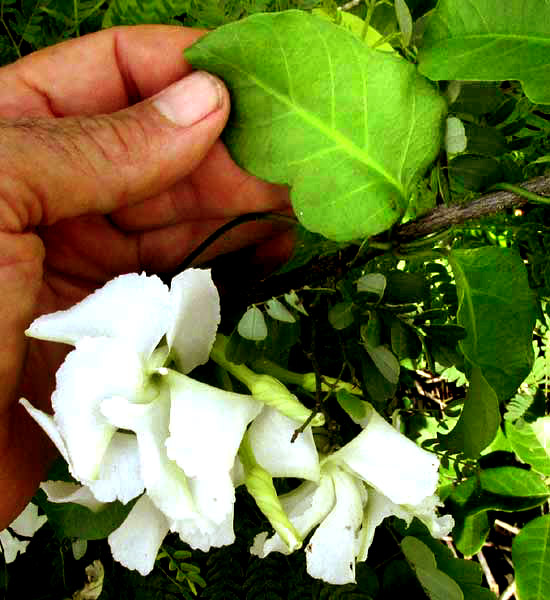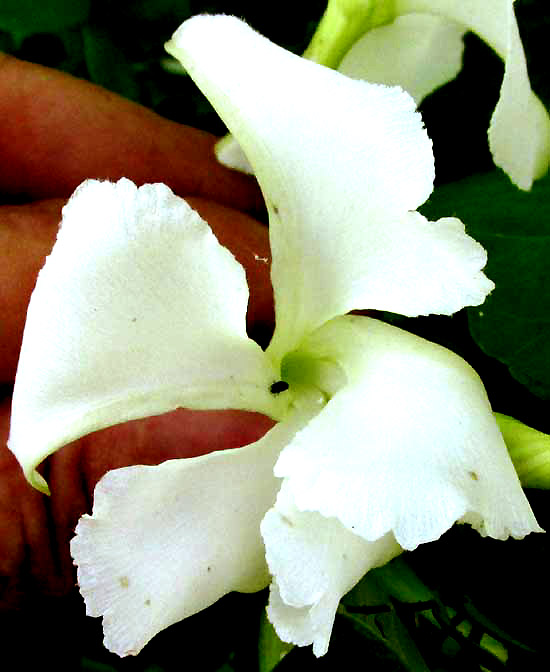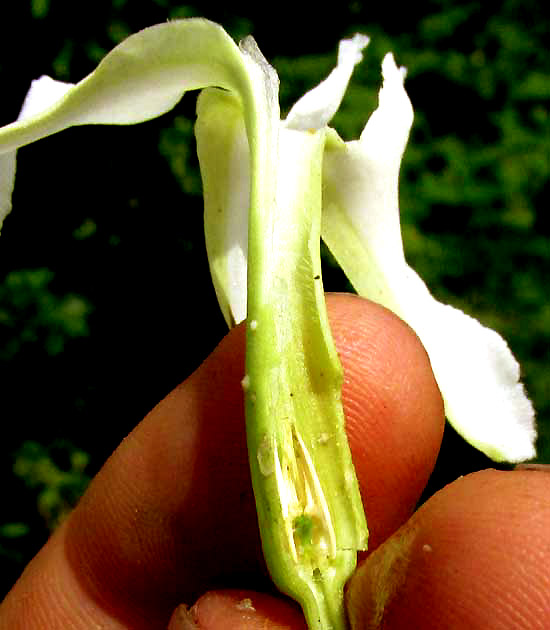Excerpts from Jim Conrad's
Naturalist Newsletter
from the July 9, 2017 Newsletter issued from Rancho Regenesis in the woods ±4kms west of Ek Balam Ruins; elevation ~40m (~130 ft), N20.876°, W88.170°; north-central Yucatán, MÉXICO
YUCATAN ECHITES FLOWERING
For a couple of weeks a certain viny member of the big Dogbane Family, the Apocynaceae, has been a conspicuous presence twining up trees and producing pretty clusters of white flowers that caused nothing less than visual explosions in the current landscape's dark greenness. Below, you can see the vine's flowers and leaves:

In that picture notice how the slender flower buds as well as the open flowers twist. Below, a single flower with its five corolla lobes creating a spiraling effect is shown

Breaking open a flower lengthwise, we see a typical Dogbane-Family flower structure with the stamens inserted at the mouth of the corolla and bearing long, sharp-pointed, arrowhead-shaped anthers surrounding the dark green, spherical stigma head, as shown below:

This is another species so poorly represented on the Internet that identifying it was hard. A few dried herbarium specimens are posted online, and here and there distant views of blossoms are provided, but that wasn't much. The main help was the Flora de la Península de Yucatán website sponsored by CICY, the Center for Scientific Investigation of the Yucatan, located in Mérida, where I found a list of all the species of the Dogbane Family known to exist in the Yucatan, and looked at pictures of each one. And with this approach it was more a matter of elimination of all species except one, and that one wasn't well illustrated.
With that sloppy, time-consuming approach, I became about 95% sure that our handsome vine is ECHITES YUCATANENSIS, native from southern Mexico south to Nicaragua. Little is known about it. I think our pictures posted with this Newsletter will be of value to future researchers.